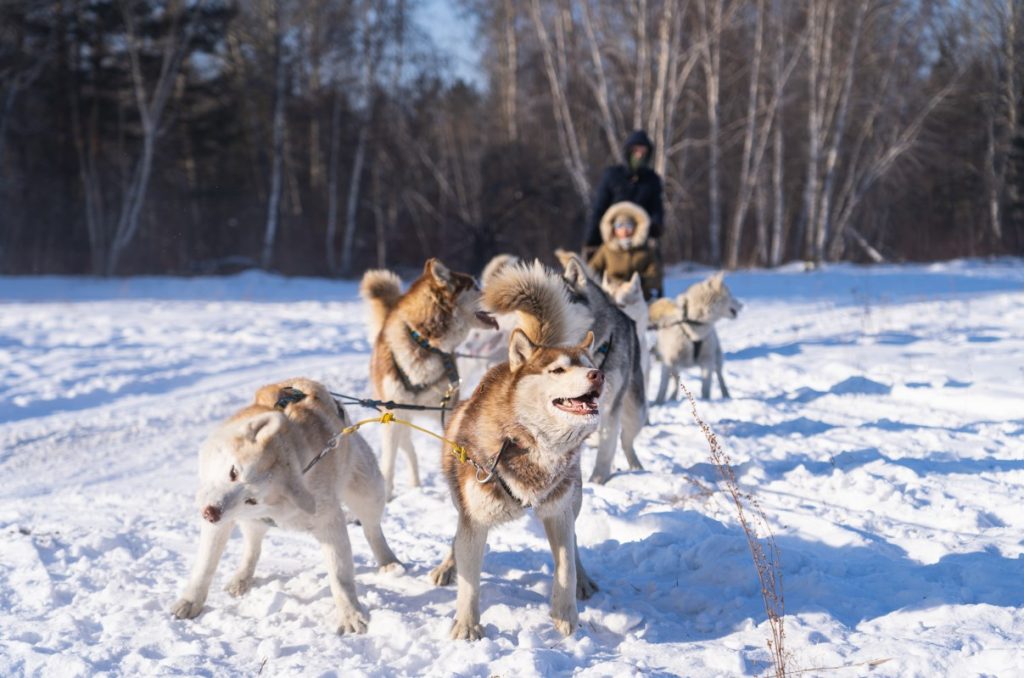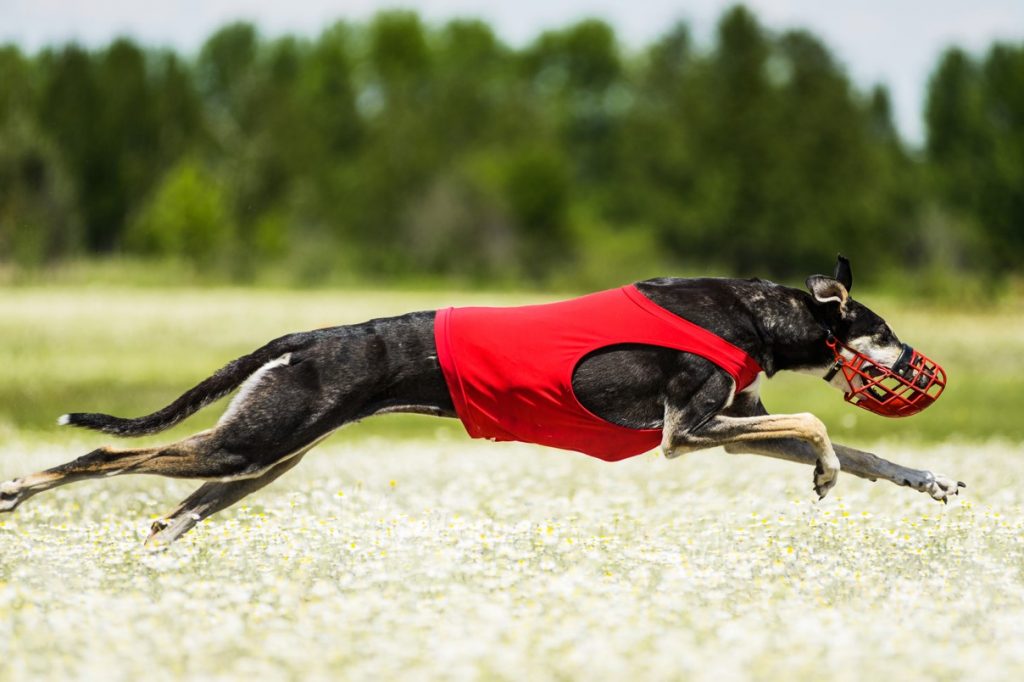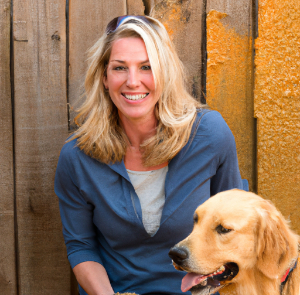
Many different dog breeds have unique talents and abilities that have been harnessed for specific purposes, such as working with law enforcement, performing in sports, and more. The following is a list of these diverse and exciting canine occupations and sports, as well as the most common breeds or types of dogs that excel in them.
Herding is a beloved and classic canine occupation that utilizes dogs to skillfully guide and care for livestock, such as cattle and sheep. This activity is well-suited for intelligent, athletic and obedient breeds, such as Cattle dogs and Sheepdogs which are the most common breeds used for herding. It is a great way to bond with your dog, while providing them with mental and physical stimulation and purpose.
Herding dogs are trained to respond to the handler's cues and commands in order to skillfully guide and care for livestock. This type of work allows for the dog to display their high level of intelligence, athleticism, and obedience.
There are also several sports that have developed from the skills used in herding, including herding trials, stock dog trials, and sheepdog trials. These competitions allow herding dogs to demonstrate their abilities and skills in a controlled and organized setting.
To prepare for herding work or sports, dogs are given the opportunity to undergo extensive training and conditioning. This includes basic obedience training, as well as specific commands and techniques to guide and care for livestock. It is important for handlers to use positive reinforcement and rewards-based training methods for training to ensure the best results for dogs and to foster a positive and healthy relationship between the dog and the handler.
Whether working on a farm or competing in a herding trial, cattle dogs and sheepdogs are intelligent and hardworking dogs that play a vital role in many agricultural operations.
Tracking and scenting are traditional canine activities that involve the use of dogs to locate and identify different types of game or quarry. Different breeds of dogs have different strengths and characteristics that are well-suited for different types of tracking and scenting activities.
Earth dog trials are an exciting challenge that requires a dedicated dog with an excellent sense of smell to follow the scent of prey, such as a rat, through the tunnel and signal upon finding it. This type of work necessitates proper training so the dog can respond to the handler's commands accordingly.

Sight Hounds such as Greyhounds and Afghan Hounds are renowned for their quickness of sight and speed, making them ideal for hunting larger prey. Subsequently, several sports have been created based on sighthound hunting, including hare coursing and lure coursing. With hare coursing, the dog runs after a live hare on a course or an open field. Lure coursing has the dog chase an artificial lure, like a plastic bag or stuffed animal around a designated course; this activity necessitates physical strength, endurance and training from the canine to follow the lure/prey and obey its handler's commands.
Scent Hounds like Basset Hounds and Bloodhounds are lauded for their remarkable sense of smell, making them perfect for tracking and trailing prey. Hunting with scenthounds has led to the development of several exciting sports, including trailing, tracking, and beagling. In trailing, the dog follows a chosen scent or prey's trail and signals when the bait or animal is located. With tracking, the canine follows a pre-determined path while pointing out any changes or variations they encounter. Lastly, beagling involves the use of small hounds such as Beagles to catch small game like rabbits.
Retrievers, spaniels, pointers, and setters are praised for their excellence in hunting birds. As a result, numerous sports have been developed around these breeds, including hunting, hunt tests, and field trials. When it comes to hunting, these canines learn various tactics of finding, indicting, retrieving prey - be it with a mounted person or one on foot. In a controlled setting such as hunt tests and field trials, the dog's skills are evaluated by judges according to certain standards.
In order to properly prepare for these activities or any related work, dogs must obtain proper training and conditioning; this includes basics like obedience lessons as well as commands and techniques for chasing down their target. It is important for handlers to adhere to ethical and legal regulations when hunting wild game as well as practice positive reinforcement during training. Retrievers, spaniels, pointers and setters are undoubtedly strong companions that hold an influential role in many outdoor adventures!
Pulling is a canine occupation that involves the use of dogs to pull sleds or carts carrying goods or people. This type of work requires a high level of strength and endurance from the dog.
Medium to large breeds, such as Siberian Huskies, are admired for their strength and athleticism, making them a great choice for pulling work. A number of exciting sports have grown out of this activity, including mushing, drafting, carting, and weight pulling. Mushing requires dogs to pull a sled for either practical means or fun activities. Drafting entails dogs utilizing carts or wagons typically used in agriculture or forestry work. Carting involves having canines pull a carriage filled with passengers or items often seen in parades. Lastly, weight pulling utilizes pooches to tow a loaded cart or sled primarily as part of their workout plan.
Whether working as a pulling dog or participating in a recreational pulling sport, medium to large breeds are valued for their strength and endurance.
Search and rescue is a canine occupation that involves the use of dogs to locate missing or lost persons. Search and rescue teams often consist of extensively trained volunteers (i.e., ordinary owners with their well-trained pet dogs).
Any breed of dog can be trained for search and rescue work, but large breeds are often preferred due to their size, strength, and stamina. Search and rescue dogs are trained to locate and alert their handlers to the presence of a missing person, using their sense of smell, hearing, or vision.
Search and rescue work requires a high level of intelligence, obedience, and athleticism from the dog. It also requires extensive training and conditioning, as search and rescue dogs may be called upon to work in a variety of environments and conditions, including rough terrain, extreme temperatures, and poor visibility.
To prepare for search and rescue work, dogs need to undergo extensive training and conditioning. This may include basic obedience training, as well as specific commands and techniques for locating and alerting their handlers to the presence of a missing person. It is important for handlers to use positive reinforcement and rewards-based training methods, as well as to follow safety protocols and guidelines.
Whether working as a search and rescue dog or participating in search and rescue drills or exercises, any breed of dog can be an invaluable asset in the efforts to locate and rescue missing or lost persons.
Law enforcement and protection is a canine occupation that involves the use of dogs to assist law enforcement officers or to protect individuals or property. This type of work requires a high level of intelligence, obedience, and athleticism from the dog.
Whether working as a law enforcement or protection dog or participating in police dog work, Schutzhund, or French Ring sport, large breeds are valued for their intelligence, obedience, and athleticism.
